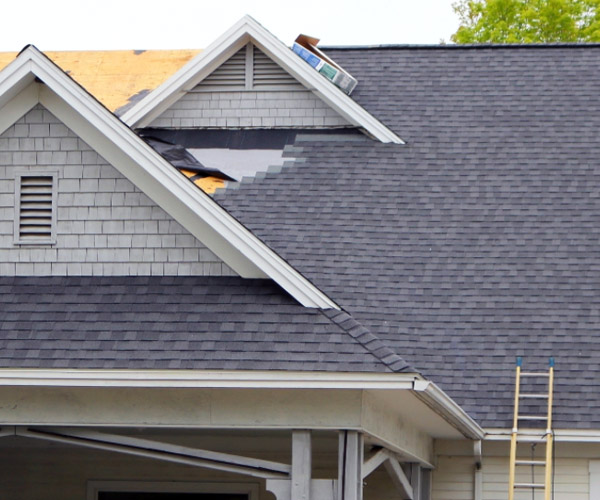Exactly How to Review Different Roofing Alternatives for Your Building Demands
Assessing roofing alternatives for your building requires a comprehensive technique that takes into consideration different variables such as the planned use of the structure, local environment conditions, and material features - Roofing Contractor. It is essential to evaluate the benefits and downsides of various roofing kinds, from asphalt tiles to steel and clay ceramic tiles, while likewise factoring in first expenses and lasting maintenance.
Analyzing Your Building's Needs
To properly assess roof covering choices, begin by extensively assessing your structure's needs. Begin by thinking about the building's meant use, as different frameworks may demand differing roof covering specs. Property roof coverings typically prioritize aesthetics and insulation, while industrial structures may concentrate on sturdiness and load-bearing capacity.
Following, evaluate the local environment problems that will certainly affect roof covering performance. Variables such as temperature level fluctuations, rainfall levels, and wind patterns can influence material choice and layout. A roofing system that masters a warm environment might not execute also in areas susceptible to hefty snowfall or extreme warmth.
Additionally, examine the structural stability of your structure. Ensure that the existing structure can support the selected roofing materials, especially if thinking about heavier alternatives. It is also important to evaluate any local building regulations or policies that might dictate certain requirements for roof covering systems.

Contrasting Roofing Materials
As soon as a comprehensive analysis of your building's requirements has actually been completed, the following step entails contrasting different roofing products. Each product uses distinctive benefits and drawbacks, making it vital to straighten your option with your details requirements and circumstances.
Asphalt tiles are extensively acknowledged for their cost and convenience of installment, making them a popular option for property structures. On the various other hand, steel roof covering, recognized for its longevity and durability, can endure rough weather condition problems yet may feature a greater first financial investment.
Clay and concrete tiles give outstanding thermal insulation and visual charm, specifically for Mediterranean-style style, yet they call for an even more robust structural support due to their weight. Timber drinks deal a natural look and great insulation homes yet might demand more maintenance and are prone to fire hazards.
Evaluating Expense and Budget Plan
Assessing your roof covering options requires a mindful examination of cost and spending plan considerations. The overall allocate a roof covering project consists of a number of elements, consisting of product prices, labor expenses, maintenance, and potential lasting cost savings. It is important to establish a clear spending plan prior to exploring particular roofing products, as this will direct the decision-making process and aid you prevent overspending.
Begin by obtaining quotes from about his numerous contractors to understand labor costs in your area. Ensure that these estimates include all needed solutions, such as removal of the old roof, installation, and any added attributes, like insulation or ventilation improvements - Perrysburg Roofer. Next off, assess the price of different roof products, considering both first setup expenses and anticipated life expectancy

Comprehending Energy Efficiency
Energy efficiency plays a vital duty in the selection of roof covering materials and systems, substantially impacting both power consumption and general i thought about this convenience within a structure. An appropriate roof covering can boost thermal performance, minimizing the requirement for heating and cooling down systems, which subsequently decreases energy bills and decreases ecological influence.
When reviewing roof covering options, consider materials that reflect instead of take in warmth. Light-colored or reflective roofing products can considerably decrease roof covering surface area temperatures, bring about reduced power use during warm months. In addition, appropriate insulation and air flow are necessary to optimize the power performance of the whole roof system. Insulation avoids heat transfer, while air flow mitigates warmth buildup in the attic room room.
One more important variable is the roof system's longevity and maintenance demands. Resilient materials that need much less frequent substitute add to long-lasting power cost savings. Additionally, the power efficiency of a roof can likewise be examined with its compliance with well established sustainability ratings such as ENERGY CELEBRITY or LEED.
Thinking About Visual Charm
A roofing's visual allure dramatically affects the informative post general appearance of a structure, matching its architectural style and improving visual allure. Roofer. When evaluating roof alternatives, it is important to think about exactly how the picked product, color, and style will harmonize with the existing structure and area. A properly designed roof covering can boost also the most basic of buildings, transforming them into aesthetic centerpieces
Different roofing materials use different visual top qualities. Typical shingles might evoke a classic beauty, while metal roofing can present a contemporary, smooth appearance. In addition, the shade of the roof covering product plays an important duty; lighter shades can make a building appear even more sizable, while darker tones may produce a cozier ambiance.
Moreover, building components, such as dormers and eaves, can boost the roof covering's aesthetic effect. It is a good idea to talk to expert developers or designers to ensure the picked roof covering alternative lines up with the general layout intent. Eventually, a roofing ought to not just supply practical advantages but also add favorably to the building's aesthetic, mirroring the proprietor's preference and the personality of the surrounding setting.
Conclusion
